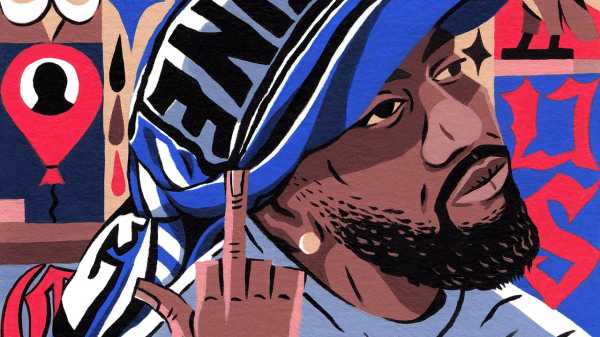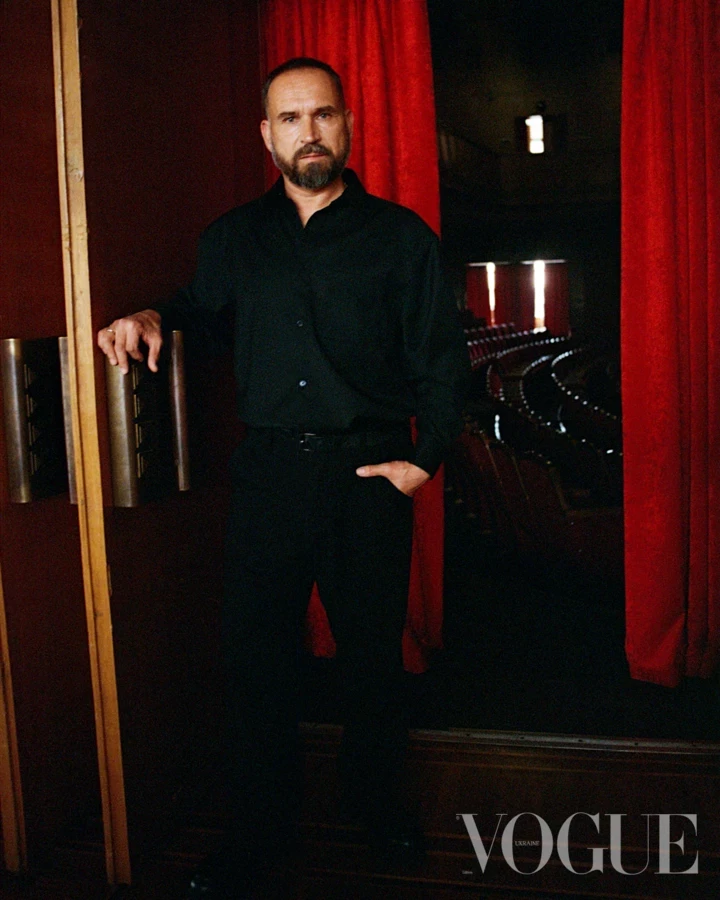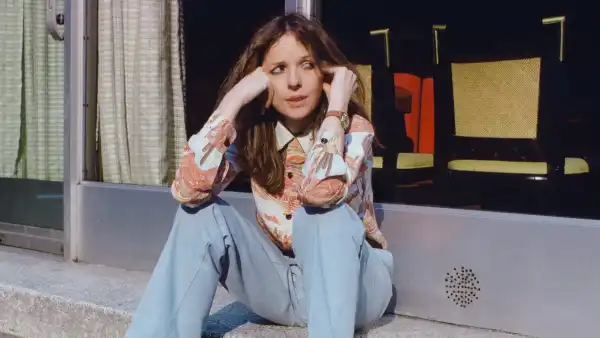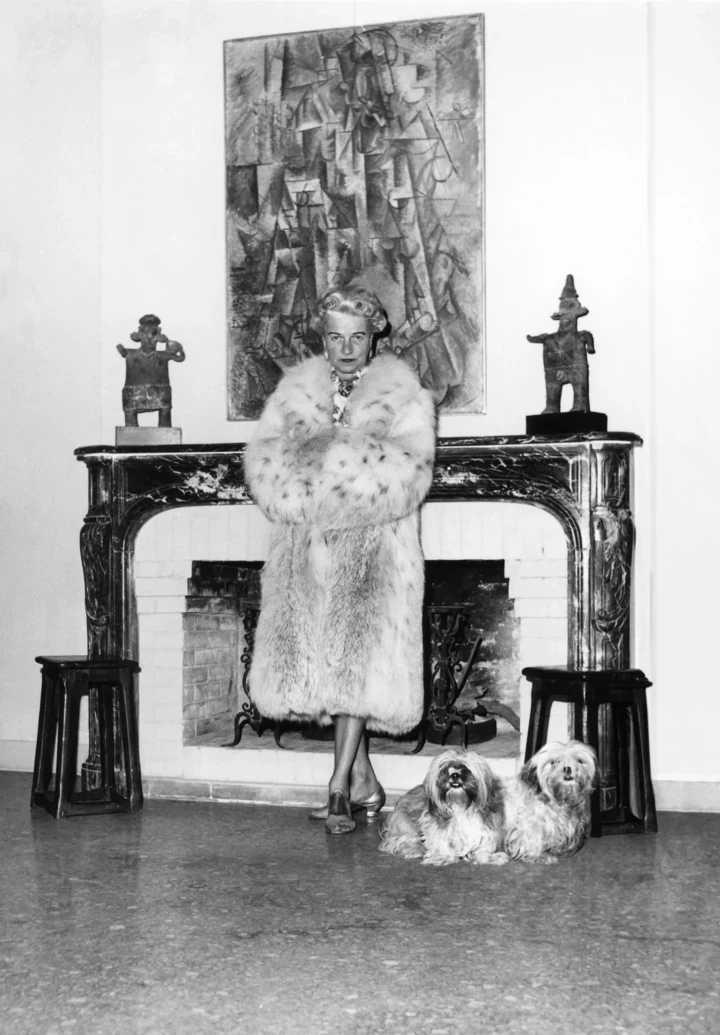
Save this storySave this storySave this storySave this story
I was at a barbecue on the Fourth of July, eating burgers and drinking rum punch, watching store-bought fireworks belch and sizzle overhead, when Kendrick Lamar released the music video for his song “Not Like Us.” Lamar likes this kind of drama—dropping something new at just the right moment, entering time with the flourish of an invisible cape. You could imagine him at home in Los Angeles that night, YouTube fired up on a big outdoor projector, watching his new video on a never-ending loop, looking up now and then at his own pyrotechnic display in the sky. Maybe he was surrounded by cheering friends. Wherever he was, he was probably feeling free.
All spring, from March to May, Lamar was in a pitched, often nasty battle with the rapper Drake. The two, opposite in ethos and, often, in sound, occupy rival archetypes. Lamar’s the experimentalist artist, interested less in image than in authentic expression. Drake’s the superstar party boy, the “hitmaker,” a missile aimed at fame and equipped to seek out its ensuing rewards. Maybe inevitably, then, the two have never seemed to like each other; occasionally, over the years, one would bury a barely veiled barb about the other in a song. Lately, though, they have been engaged in an open musical war—they insulted each other’s height and personal style, questioned the authenticity of each other’s attachment to hip-hop and its various regional cultures, and, harrowingly, accused each other of heinous crimes. Lamar called Drake a pedophile—indeed, he established a new library of insinuating terms for pedophilia. Drake claimed that Lamar had physically abused his fiancée. If you grew up listening to rap and basking in battles like these, it was a queasy ride. Nice to know that rap could still create a culture-wide main event of this kind, full of narratives and lore and cathartic plot points—but the flagrant misogyny on display dampened the mood.
“Not Like Us,” released on May 4th, was the song that, by most accounts, ended the quickly souring beef. It concluded a long spring and helped the summer—musically at least—achieve its blooming. You can’t go anywhere without hearing it. It sounds like the beach and a cookout all at once. It’s got a buoyant, joyously repetitive beat, made by Lamar’s fellow-Angeleno Mustard, and Lamar’s verses showcase his array of finely honed talents: for percussive noisemaking, for studding punch lines with multiple meanings, for telling stories with political undertones. He also did something he’s not particularly well known for: have a whole lot of public fun.
The video, directed by Dave Free and Lamar, is, in some ways, very simple. It is, at least in part, about the pervasive presence of the song itself. Some of the most memorable shots are of huge crowds of ardent fans, glowing in the California sun. They’re packed so closely together that you can’t see the ground beneath their feet. They’re all rapping the words to the song, and it’s pretty obvious that they haven’t been coached: it’s like a concert on tape. Even in the staged atmosphere of the video, this essential outsideness is evident—everybody’s heard it floating out of a car window, or banging out of a speaker set up outdoors. The social aspect of music—the hit song gone ubiquitous, as abundant as the air—is often downplayed in the era of Spotify and other streamers. Music videos don’t appear at a dependable time on a channel we all watch anymore. Everybody’s their own d.j. and their own v.j.
So many people onscreen at once, so many mouths vocalizing in concert—it’s a way to say, Here, look, a real hit. The kind you grew up with. You’re welcome.
When the packed-crowd shots dissipate, the video often wanders off to what looks like a neighborhood get-together. A bunch of parked cars sit gleaming, and around them stand a bunch of guys wearing red and blue clothes and accessories, emblems of West Coast rap’s entanglement and indebtedness to the byways of various gangs. Lamar’s with them, in a cool olive-green jacket, dancing and grinning. Behind the men and the cars is a low-slung apartment complex, maybe a housing project, painted a dull yellow.
During the battle, when Lamar wasn’t busy proving the true depth of his popular appeal, he made hyperlocal appeals to his home milieu, Black Los Angeles. Hip-hop has gone global, of course—Drake is maybe the most fully realized sign of that development, short of Jay-Z—but it is rooted in regionalism, in “sounds” that sprout variously, like produce, out of the soil and under the sun of particular places. The East Coast–West Coast binary produced another of rap’s most famous—and most tragic—conflicts, the one between the Notorious B.I.G. and Tupac Shakur. The music’s center of gravity soon travelled to the South, to cities like Atlanta and Houston.
Drake is proudly from Toronto, but he has conducted his career as an absorbent cosmopolitan, trawling other places’ styles to refresh his trove of possible rhythms. Lamar’s strongest argument, throughout the whole battle, repeated ad nauseam, was that Drake was a cosplaying man from nowhere, starved for a kind of belonging that you can’t fake with accents or new clothes or freshly found beats.
On Juneteenth, a few weeks before the “Not Like Us” video arrived, Lamar convened a California-celebrating concert called “The Pop-Out: Ken & Friends.” It streamed worldwide, on Amazon—no great friend of local neighborhoods, it must be said—but was an exercise in geographical specificity. One of Lamar’s guests at the concert was Tommy the Clown, the famous “hip-hop clown” who invented a dance called clowning, which evolved into the West Coast staple krumping. Tommy, with his blaring technicolor Afro wig, appears early in the “Not Like Us” video, too. He’s the one who presses play on a turntable and gets the song going. All those guys near the apartment complex undoubtedly know who Tommy is, are acquainted with his cultural impact—and I’d bet he knows some of them from around the way, too.
That’s the logic of this video: a whittling down—first, the masses singing along in one oceanic voice, then smaller groupings suggesting home. Sometimes it’s just Lamar and Mustard, rapper and producer, an irreducible unit of hip-hop songcraft. They sway to their own creation in a car, or inside Tam’s, a neighborhood burger spot. Even more intimately, toward the end of the video, there’s a black-and-white scene in a living room, presumably Lamar’s. He’s there with his fiancée—the subject of some nasty bars by Drake—and his two children. At first, they’re standing still and looking directly into the camera, reiterating Grant Wood’s painting “American Gothic.” They might also be referring to a Gordon Parks photograph, also called “American Gothic”: a Black woman, standing alone, holding a mop in one hand and a broom in the other, an American flag vertically draped behind her.
Maybe the Independence Day release date was a jingoistic move, drawing a bright line along the United States’s border to the north. Lamar and his family, in this reading, are Edenic figures, inaugurating a new sort of American iconography, descended from Wood and Parks but breaking from them as well, born from the aftermath of a great—if also sometimes regrettably puerile—battle. Here’s the new nation; here’s the kind of imagery that really matters: a family without pitchforks or brooms, just resting. Soon, Lamar and his family are dancing, enjoying one another and enjoying the recent victory.
A concert on Juneteenth and a video on the Fourth! Lamar is a master of rap, it can’t be denied, and his hard-won skill has earned him an undammable flood of free expression. There’s nothing he can’t figure out how to say in a verse, no voice he can’t put on, no way he can’t sound. Perhaps this makes him equally a quintessential product of his country. He descends from the Revolution and the Emancipation, twin freedoms written in blood. The “Not Like Us” video is his V-J Day, his chance to stage happy pandemonium in the streets. One day we’ll learn to do the right thing—throw a party, sing a song, make ourselves and somebody else free—without having to wage a war. ♦
Sourse: newyorker.com







